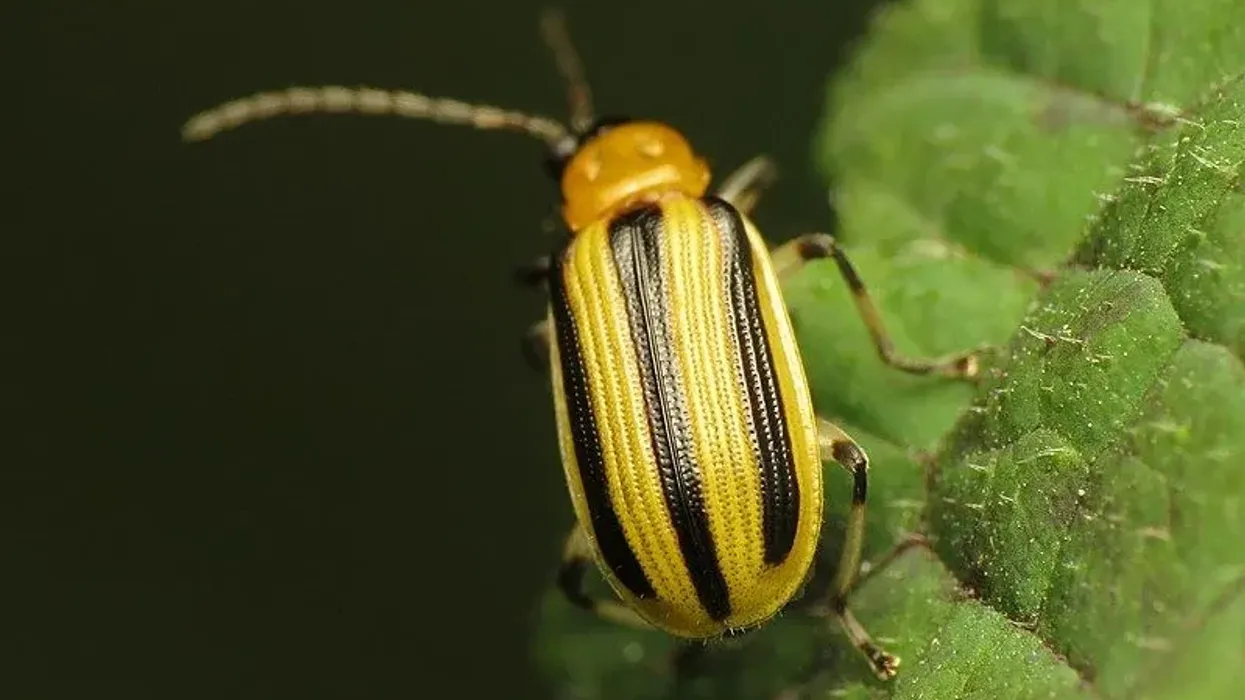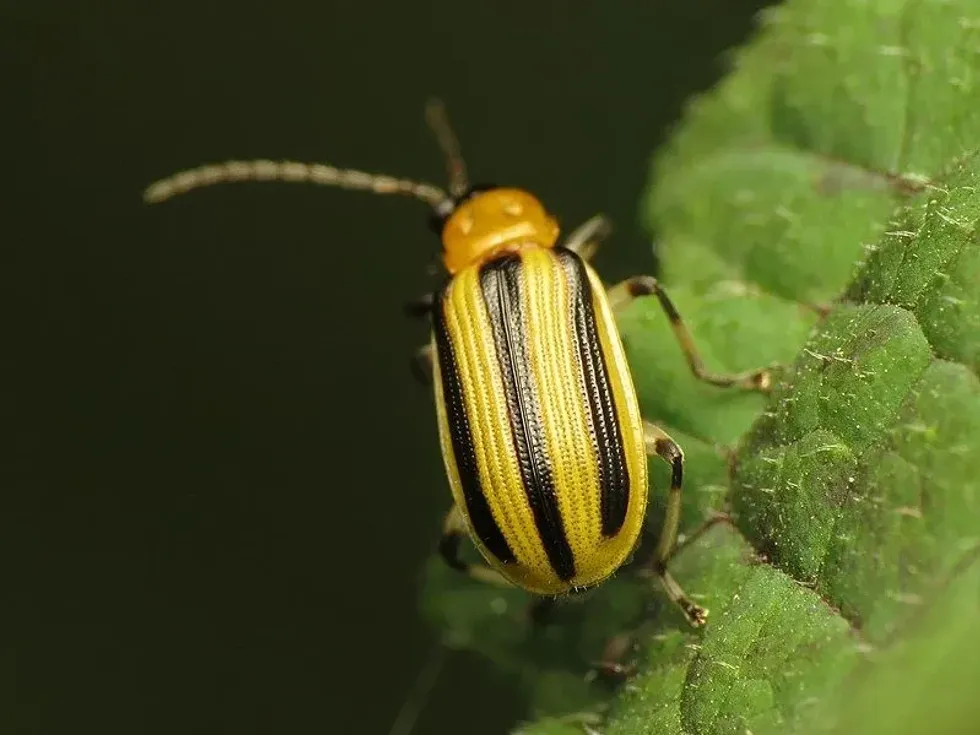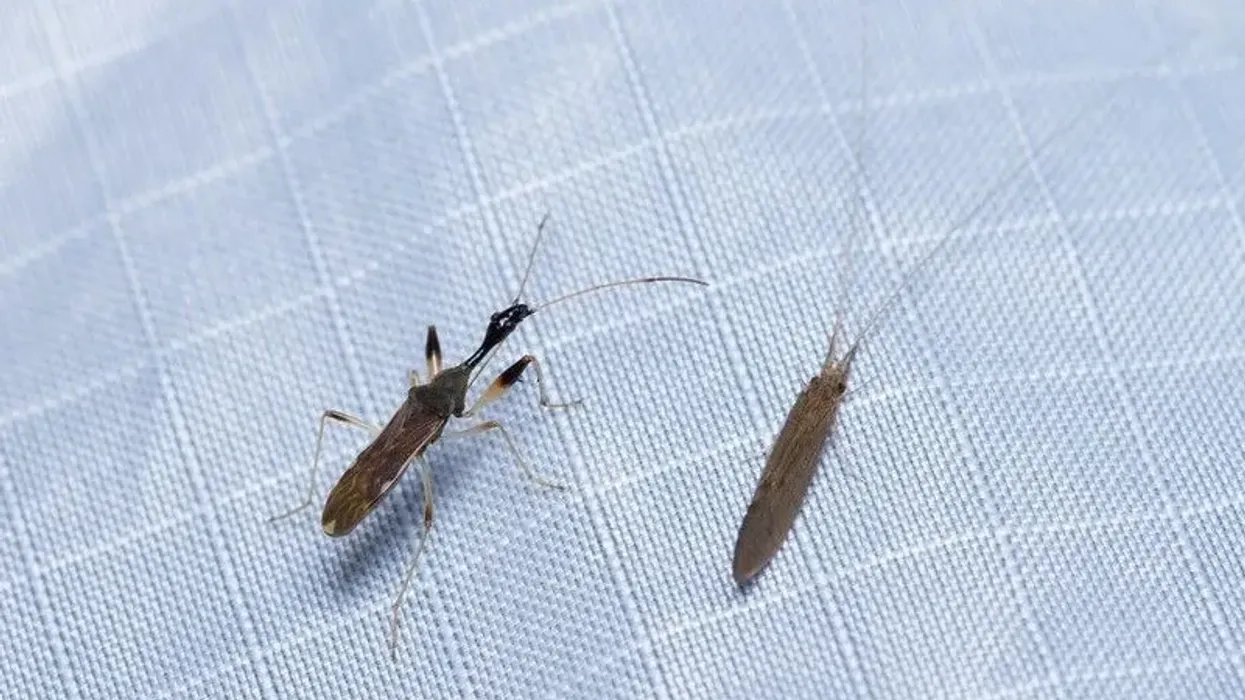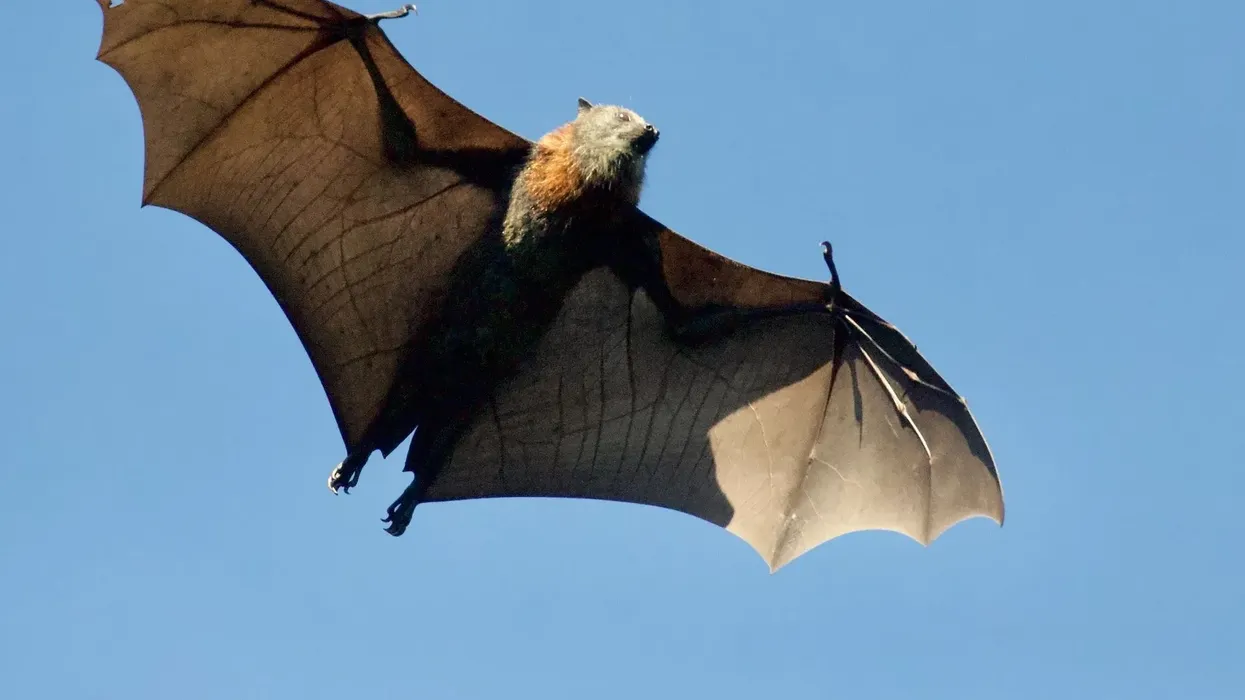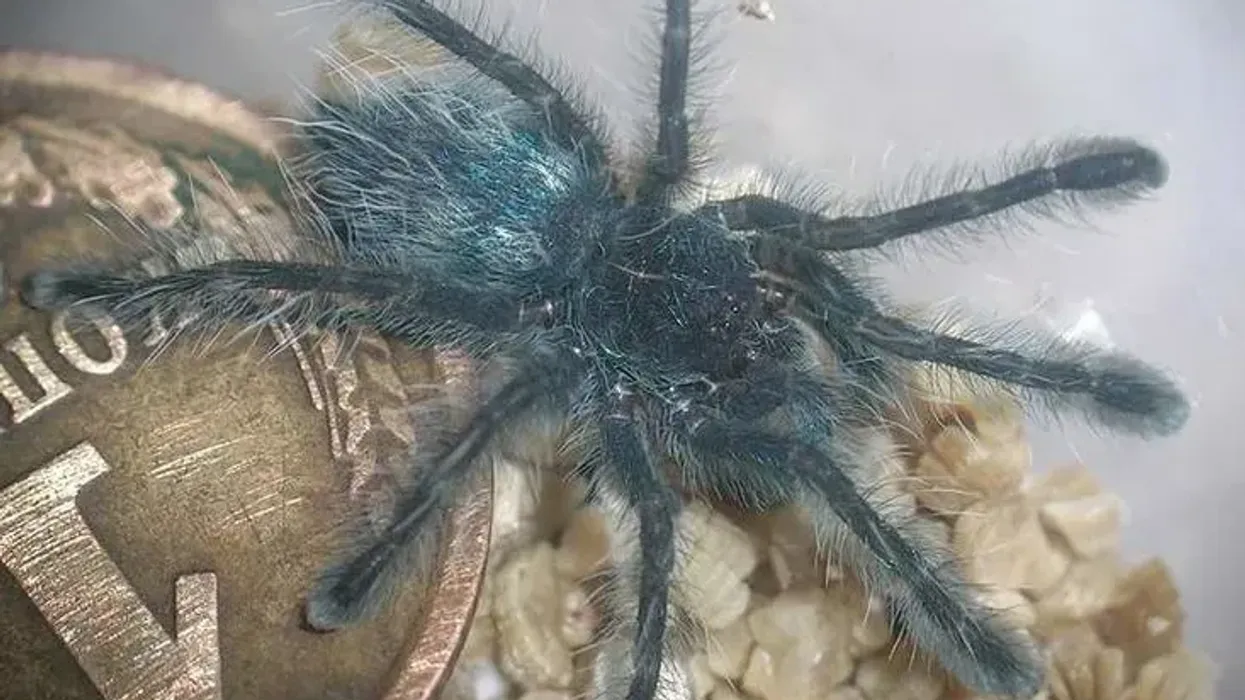The striped cucumber beetle is an extreme agricultural pest of vegetation within the family Cucurbitaceae in North America. The striped cucumber beetle is a carrier of the plant disorder bacterial wilt. Though the striped cucumber beetle lives throughout Florida, it's the least usually observed amongst the three chrysomelid species on cucurbit plants within the state.
These beetles are yellow and have three stripes of black. They can damage fruit and foliage and cause bacterial wilt. They can even fly! One natural insecticide that can solve this pest problem of bacterial wilt is neem oil that can also kill them. Read on to find out more!
If you like these, then you should definitely take a look and read our longhorn beetle and dung beetle.
Striped Cucumber Beetle Interesting Facts
What type of animal is a striped cucumber beetle?
The adult striped cucumber beetle (Acalymma vittatum) is of the family Chrysomelidae and an extreme pest of cucurbit crops, vegetation, and plants, in each larval and grownup stages during the growing season.
What class of animal does a striped cucumber beetle belong to?
The yellow striped cucumber beetle classification emphasizes that it belongs to the Insecta class of animals.
How many striped cucumber beetles are there in the world?
There is no definite research on how many striped cucumber beetles (Acalymma vittatum) are there in the world, but the striped cucumber beetle life cycle keeps going on, and hence, it has been categorized as Least Concern by the IUCN Red List.
Where does a striped cucumber beetle live?
The three-striped cucumber beetle (Acalymma vittatum) is indigenous to North America, extensive within the east, from a long way south as Mexico, and north into southern Canada. Though the species has been observed in western states and provinces, the Rocky Mountains are considered the western restriction of its range.
It is said to develop into the spotted cucumber beetle (Diabrotica undecimpunctata) in the west.
What is a striped cucumber beetle's habitat?
Want to know about the orange striped cucumber beetle origin? They overwinter as adults in blanketed sites alongside hedgerows and wooded areas from the soil.
Some may also skip the wintry weather in the field below antique crop debris in the soil. The three-striped cucumber beetle starts to emerge from overwintering sites within the spring while temperatures exceed 55 degrees F (12 degrees C).
The striped cucumber beetle nest can be found amidst cucurbit crops, trap crops, and plant life where it feeds and mates.
In summer adults emerge from the soil and feed in flowers, on foliage, or the floor of fruit. Adults finally leave the field to feed on the pollen of older plants till cold weather.
Who do striped cucumber beetles live with?
The adult striped cucumber beetle lives in pairs to mate and lay eggs. They then leave the eggs at the base of host plants to let the larvae feed on the roots while they go back into the soil. Spotted cucumber beetles also do the same.
How long does a striped cucumber beetle live?
The adult striped cucumber beetle (Acalymma) goes through a short life cycle. The eggs are deposited in small clusters of as many as four eggs, approximately 1.9 in (5 cm) into wet cracks inside the soil in a 5.9 in (15 cm) diameter across the base of the stem of a plant and floating row covers.
A female can also lay as many as four eggs consistent with a day and 125 eggs in her lifetime, and egg incubation takes about five to nine days.
Larvae emerge from eggs and start to feed at the roots and stems of cucurbits in the row covers. The striped cucumber beetle pupates inside the soil, close to the bottom of its host plant.
Striped cucumber beetles have a brown or blackhead, with a vivid yellow prothorax and black abdomen.
The elytra are yellow, with three longitudinal black stripes alongside their complete length. The insect lives for about eight weeks and then dies.
How do they reproduce?
Large numbers of adults emerge from diapause during spring to feed at the foliage, flowers, and pollen of cucurbit plants. Females will lay eggs on or directly in the area of the stem of a feasible host plant, regularly a member of the genus Cucurbita.
Eggs are a vivid orange color and much less than a millimeter in diameter. Eggs hatch after a brief duration, and larvae feed at the roots of the plant.
Adults of the striped cucumber beetle feed on blossoms of flowering vegetation, mate, and lay eggs inside soil at the bottom of host vegetation (cucumber, squash). Striped cucumber beetle eggs hatch in numerous weeks, and larvae feed on plant roots and underground components of stems.
Larvae remodel to pupae inside the soil and emerge later during the summertime season as adults. Adults go back to cucurbit vegetation and feed at the foliage later during the summertime season.
It takes approximately 40-60 days to grow from an egg to an adult. There is normally one era in a year.
What is their conservation status?
The striped cucumber beetle organic control and the natural enemies of striped cucumber beetle have led to the decline of the species of this insect. But the striped cucumber beetle control did not make this pest extinct.
This insect is still in abundance and is a pest to all striped cucumber beetle plant hosts like the cucurbit plants and crops. They have been categorized as Least Concern by the IUCN Red List.
Striped Cucumber Beetle Fun Facts
What do striped cucumber beetles look like?
The larvae are white, narrow, and caterpillar-like, with dark-brown head capsules. Pupae are white, 0.31-0.39 in (8-10 mm) long, with an extensive form anteriorly and tapering to a slender point on the distal end of the abdomen.
Striped cucumber beetles have a brown or black colored head, with a shiny yellow prothorax and black abdomen. The elytra are yellow, with three black stripes going alongside their whole body.
Adults are about 0.2 in (5.25 mm) in length and 0.05 in (1.3 mm) wide. Western corn root adults are longer with black and yellow markings that don't expand the whole body of the elytra, like the three black stripes that are a significant part of the striped cucumber beetle identification.

How cute are they?
The insects like the striped cucumber beetle sound cute if you judge by their name but are not cute to look at. The striped cucumber beetle feeding damage is a lot.
The striped cucumber beetle damage in the form of bacterial wilt happens to cucurbit plants and cucurbit crops. Adult beetles pupate in the soil and are not beneficial insects to the crop. They are considered a pest because of the bacterial wilt that they cause.
How do they communicate?
There has been no such research on how striped cucumber beetles communicate with each other.
How big is a striped cucumber beetle?
The striped cucumber beetle size depends on the stage that they are in. Normally they grow 0.28-0.35 in (7-9 mm) in length. They are around the same size as the green scarab beetle.
How fast can a striped cucumber beetle run?
There has been no specific study on how fast a striped cucumber beetle can run. However, they are known to be pretty fast.
How much does a striped cucumber beetle weigh?
The exact weight of the striped cucumber beetle is still unknown, but they do not weigh much as they are very small creatures.
What are the male and female names of the species?
There are no different names for the male and female species according to entomology. They are known as the male striped cucumber beetles and the female striped cucumber beetles.
What would you call a baby striped cucumber beetle?
There are no specific names for the baby striped cucumber beetles. These creatures are known by the stage that they are in. They pupate in the soil, and adult beetles emerge out of them.
What do they eat?
The entomology of these insects has found that the striped cucumber larvae and adult beetles feeding on organic plants and crops. The adults feed on these plants and leave behind Erwinia Tracheophyta, which means bacterial wilt, which makes these plants wither and die. The adults feed especially on cucurbit crops and plants. This feeding is what causes harm.
Are they dangerous?
They are not at all dangerous or poisonous to humans but are a nightmare for plants and gardens. The best pest management for the striped cucumber beetles is to control their growth, feeding, and population by using pesticides on plants or by simply leaving it up to the natural enemies of the striped cucumber beetle.
Would they make a good pet?
No, the striped cucumber beetles cannot be a good pet to a human being as these beetles are not beneficial insects and are known as pests that destroy the cucurbit crop and plant by feeding and laying their offspring on them.
They spread bacterial wilt (Erwinia Tracheiphila) and squash mosaic virus among the row covers of squash plants and destroy the organic crop.
Pest management and control include pesticides and kaolin clay, and sometimes people leave this job to the natural enemies of the striped cucumber beetle.
Did you know...
The spotted cucumber beetle is a more common beetle in Florida, and its damage symptoms are exactly like the striped cucumber beetle feeding damage. The striped cucumber beetles usually start from the corner of the field then start to come inwards throughout the growing season.
How to control striped cucumber beetles
Some of the ways to control the striped cucumber beetles are by using measures like trap crops, pesticides, and barriers. You can use sticky traps on your crops to catch these beetles, and by the use of petroleum jelly on your gloves, you can easily pick them and throw them out of your garden away from your crops.
Natural predators will include soldier beetles and braconid wasps.
What plants can striped cucumber beetles be found on?
The striped cucumber beetle damages the plants and fruits by feeding and laying their eggs on them. The plants where they are mainly found are the cucurbits. As the cucurbits plants like cucumber, butternut squash, and melons are very juicy in taste for feeding, it attracts these beetles' species.
Here at Kidadl, we have carefully created lots of interesting family-friendly animal facts for everyone to discover! Learn more about some other arthropods from our tube worm facts and horseshoe crab fun facts pages.
You can even occupy yourself at home by coloring in one of our free printable Striped cucumber beetle coloring pages.

